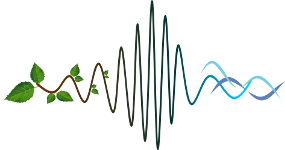While the audible soundscape of almost every terrestrial ecosystems encompasses an huge proportion of communication, advertising and display calls, the ultrasound domain is mostly populated by bats echolocation calls. Because those calls are emitted in a quasi-continuous way by active and mobile animals, they offer a better opportunity for monitoring than territorial or display calls. In addition, echolocation calls at an intraspecific level are tightly tailored to fit both the bat's surrounding, open or cluttered, and their requirements such as commuting, catch or landing. At an interspecific level, too, call structure reflects more or less the habitat specialization and feeding habits of a given species. Owing to those advantages, a citizen science monitoring project (Vigie Chiros) was launched by the French Natural History Museum, seven years ago, using acoustic road transects and point counts to survey bats populations' trends. We will present here the results obtained from the data it yields, at the temporal level, i.e.trends in the apparent abundance of some species and at the spatial level, i.e. habitat preferences and landscape influence. In addition, we will discuss the challenges we faced and the solutions we explored in such analyses and, especially, the automatic identification of echolocation calls by machine learning techniques.
|
|
|
|
Monday
16
Applications I
› 15:30 - 15:45 (15min) › Rouelle Conference Hall
Surveying ultra-soundscape to monitor echolocating bats activities and populations.
1 : Centre d'écologie et de sciences de la conservation
(CESCO)
-
Website
Muséum National d'Histoire Naturelle (MNHN), CNRS : UMR7204
55 rue Buffon 75005 PARIS -
France
2 : Centre d'écologie et de sciences de la conservation
(CESCO)
-
Website
Université Pierre et Marie Curie (UPMC) - Paris VI, Muséum National d'Histoire Naturelle (MNHN)
55 rue Buffon 75005 PARIS -
France
3 : Centre d'écologie et de sciences de la conservation
(CESCO)
-
Website
* : Corresponding author
Muséum National d'Histoire Naturelle (MNHN)
55 rue Buffon 75005 PARIS -
France
|
| Online user: 2 | RSS Feed |

|

 PDF version
PDF version